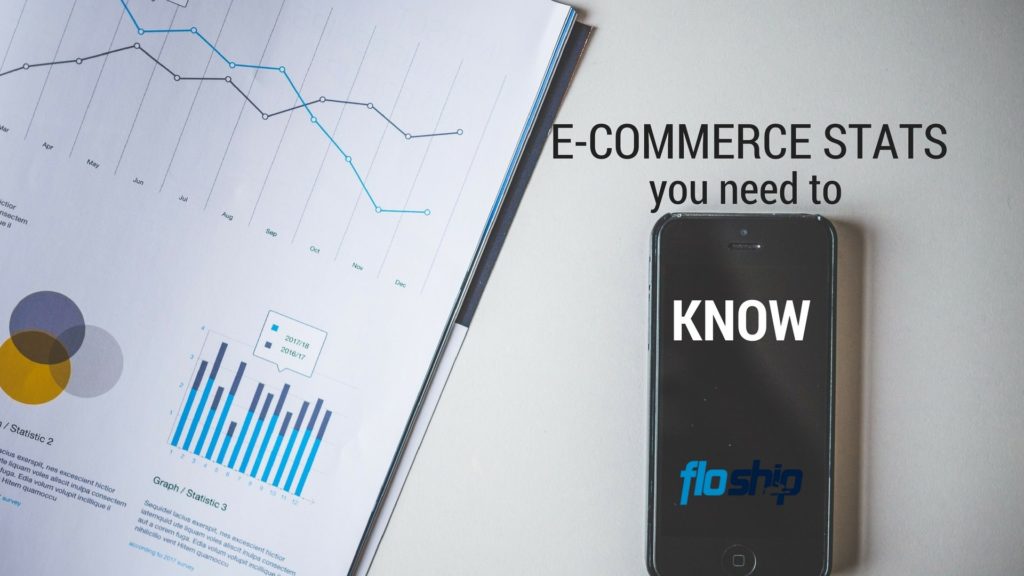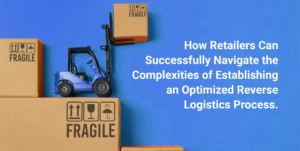Do you have dreams of eCommerce riches? Do you dream of selling your product online to millions of satisfied customers? Do you have visions of making it rain with your online store?
Good news!
Now is an AMAZING time to get into eCommerce. The market is booming and will only keep getting bigger.
But you can’t just slap together a website and expect people to start handing you money. There are some things you need to know before you launch your online megastore.
In this post we’ve compiled 20 crucial statistics that every eCommerce retailer needs to know.
Part #1: Stats To Get You Excited About The Future of eCommerce

STAT #1: Currently, eCommerce sales only account for about 8% of total retail sales in the United States and 14% in the United Kingdom. This means that there is absolutely huge potential for growth in the eCommerce world.
Believe it or not, some older individuals still feel uncomfortable with the idea of making purchases online. As younger generations make up more of the purchasing pie, we should expect to see eCommerce sales explode.
Additionally, as more and more products become available online, eCommerce sales will skyrocket even higher. We see hints of this now with Amazon’s massive push to sell anything and everything on their site.
STAT #2: The eCommerce market is huge. In 2016, 53% of global internet users made an online purchase. That constitutes approximately 1 billion people.
As more people throughout the world get access to high-speed internet, the amount of online purchases is only going to continue trending upward. This portends huge success for those who are interested in starting an eCommerce business.
STAT #3: By 2020, B2B eCommerce sales are expected to outstrip B2B sales, with B2B sales reaching over $6.7 trillion.
If you’re a business who sells to other businesses, you should certainly consider the eCommerce space. It’s hot and it’s only going to get hotter.
STAT #4: Every year, “https://infographic.statista.com/normal/chartoftheday_3790_e_commerce_revenue_per_online_shopper_n.jpg” target=”_blank” rel=”noopener”the average customer in the United States spends approximately $1,800 on eCommerce transactions. Residents of the United Kingdom spend approximately £1600.
Given that this is such a small portion of total yearly consumer spending, we should expect to see this number leap skyward over the next decade.

STAT #5: 40% of United States males and 33% of females between the ages of 18 – 34 say they would “ideally” purchase everything online. This reality demonstrates that the millennial generation is far more comfortable purchasing online than older individuals.
As the Millennial generation gets more disposable income, they will be spending a significant portion of it online. Right now the primary limit to purchasing everything online are speed, and we’re probably only a few ways from 2-hour delivery.
PART #2: Stats To Help You Drive More Traffic and Sales
STAT #6: Currently, the top three sales traffic sources driving sales for eCommerce sites are organic (22%), email (20%), and cost-per-click (19%). Surprisingly, social media accounts for just 1%.
This provides several key insights. First social media sales are ripe for the picking if a company actually knows what they’re doing. Obviously, most companies don’t know how to utilize social media properly, resulting in low sales amounts.
Second, organic search traffic is the highest driver of online sales. Organic traffic comes when individuals search for a particular type of product or phrase in a search engine. This means that companies need to pay very close attention attention to their SEO efforts.
STAT #7: The top two overall traffic sources for eCommerce sites are Google search (43%) and Google AdWords (26%).
The implication here is that companies need to invest sufficient funds in SEO optimization to ensure they are getting as much organic search traffic as possible. They also need to carefully monitor their Google AdWords to generate as much paid traffic as possible.
Additionally, companies need to carefully examine their eCommerce sales funnels to ensure that organic search traffic is properly funneled toward sales.

STAT #8: Pinterest seems to be the one social media platform where people go to look for purchases. Approximately 55% of Pinterest users in the United States use the platform for finding products.
The implication for businesses is that they may want to focus more advertising dollars on Pinterest than on other platforms. However, those businesses should also keep in mind that Pinterest skewers heavily towards women which could determine the effectiveness of their efforts (depending on the business).
STAT #9: Although not necessarily a heavy driver of eCommerce sales, Instagram users spend the longest time on Commerce sites. The average Instagram user spends approximately 192 seconds on eCommerce sites, which is double Facebook and triple Pinterest.
When driving traffic from social media sites, take into account what you’re trying to accomplish. Are you trying to drive clicks, purchases, or sales? Depending on where your customers are in the sales funnel, a different social media traffic source may work more effectively.
PART #3: Stats To Get More Customers Interacting With Products On Your Site
STAT #10: Few things determine the effectiveness of an eCommerce website more than the speed of the site. In fact, 39% of people will leave a site if it doesn’t load quickly. Generally speaking, you don’t have more than 2-3 seconds to engage people’s attention before they leave.
This has massive ramifications for eCommerce retailers. If your website isn’t fast enough, it will cost you sales. If necessary, spend money to ensure that your site loads at lightning speed.

STAT #11: In addition to speed, website design also matters. If people think that your website is ugly, they’ll leave. In fact, approximately 38% of people stated that they wouldn’t use a site if it was unattractive.
This is intuitive on a number of levels. A website that’s poorly designed looks untrustworthy. If a website feels untrustworthy or shady, people simply won’t shop there. Spend the necessary money to make your site feel attractive and easy to navigate.
STAT #12: Put your most valuable web space 400 pixels from the left edge of your desktop website. This is the space that will generally speaking get the most eyeballs.
If there is a product you want to promote or a sale you want to push, consider putting it in this prime position. Every spot on your website matters. Choosing where you put items on your site can make a huge difference.
STAT #13: More and more online shoppers are doing in-depth research before making purchases. Around 80% of shoppers spend time researching their purchases before actually buying.
Be sure to include sufficient information about your products on your site. Additionally, you consider investing time in getting reviews of your product. Customers rely upon reviews to help them know whether a product works effectively. Getting reviews should be a standard part of your sale process sale process.
STAT #14: Your website should always be optimized for mobile devices. Very few people use only desktop computers (only 11% of consumers)
If your site isn’t optimized for mobile eCommerce, you will be missing out on significant sales.
18. Consumer insight. Mobile sessions accounted for 59% of all sessions by device on eCommerce sites, but these mobile browsers made up just 38% of revenue (Source: Wolfgang digital)

STAT #15: Mobile devices make up the lion’s share of all sessions on eCommerce sites but mobile browsers only make up for 38% of revenue. The implication is that customers tend to make bigger purchases from their desktop computers.
This information should inform the way you design your website. When laying out the desktop version of your site, consider that your customers may be using it to make bigger purchases. Conversely, mobile customers may tend toward smaller purchases. Use analytics to track where all purchases are being made.
STAT #16: eCommerce customers really care about being able to zoom in on images on mobile sites. 70% of customers say that the ability to zoom is a top priority when deciding whether to purchase.
Remember, those visiting your site on mobile devices have much smaller screens. If they can’t zoom in on your products, they won’t feel comfortable purchasing from their phones.
PART #4: Stats To Help You Up Your Conversion Rate
STAT #17: Conversion rates are much higher from desktops (4.4%) than they are from smartphones (1.5%). This implies that you should do everything in your power to optimize your mobile site for conversions.
Also, when spending advertising money to drive traffic to a sales page, consider whether you’re advertising on desktop or mobile devices.
STAT #18: It’s not uncommon for people (85% of customers) to start a transaction on one device and finish it on another. This has significant implications for the way you target those who have abandoned carts. At a minimum, you should have an automated email sequences to target those who have abandoned carts.
You should also consider retargeting ads at the same individuals.

STAT #19: Pay close attention to your shipping costs. 44% of customers will abandon a shopping cart if the shipping cost is too high or if they encounter unexpected additional charges.
At a minimum, you should offer multiple shipping options, including a low-cost one.
STAT #20: Also, pay close attention to your returns policy. A policy that makes it difficult to return purchases will massively deter customers, with around 80% hesitating to buy.
Companies like LL Bean and Zappos understand this, which is why they’ve gone to such great lengths to make return simple. The easier something is to return, the less risk the buyer faces.
Conclusion
Anyone can start an eCommerce store. It’s a great time to be alive!
But not everyone knows how to make money with their ecommerce store. Thankfully, you can implement these 20 crucial facts in your store. By implementing these items, you can quickly and dramatically set yourself apart from the pack.
Now get to selling!
More From the Ecommmerce Blog
- Is Magento 2.0 Good for SEO?
- 5 Tips to Build Buyer Personas for eCommerce Businesses
- 5 Common E-commerce Fulfillment Problems (And How to Fix Them)
- How Faster Website Load Times Can Help Sales

Ready To Upgrade Your Logistic Solution?
Speak to Floship ecommerce logistic consultant about improving your global support chain today





